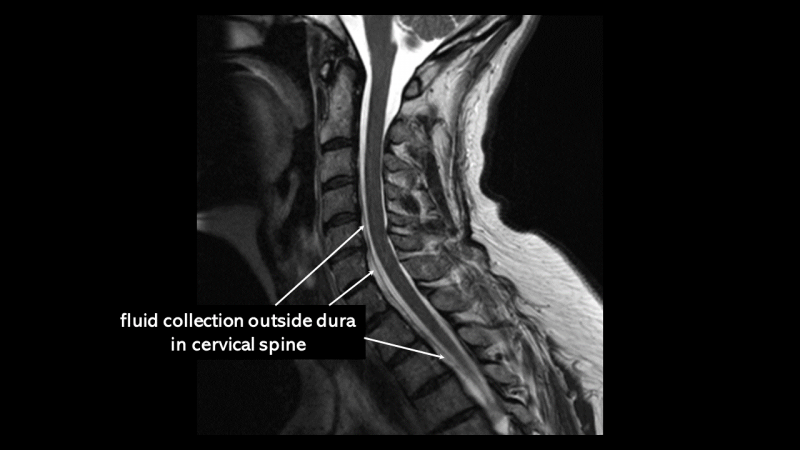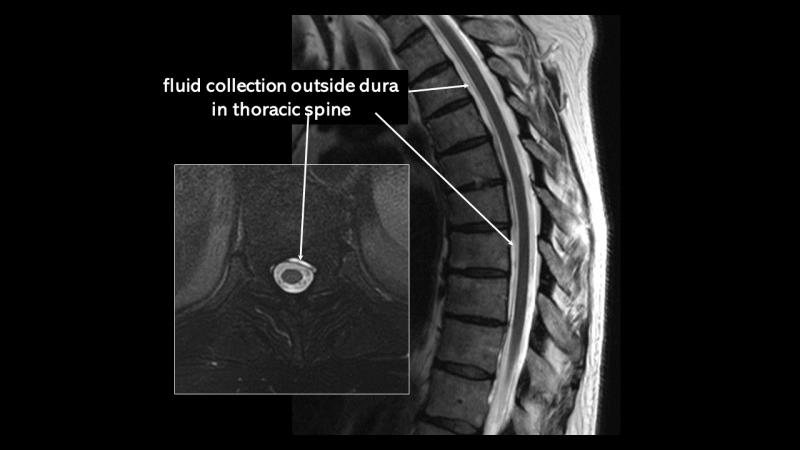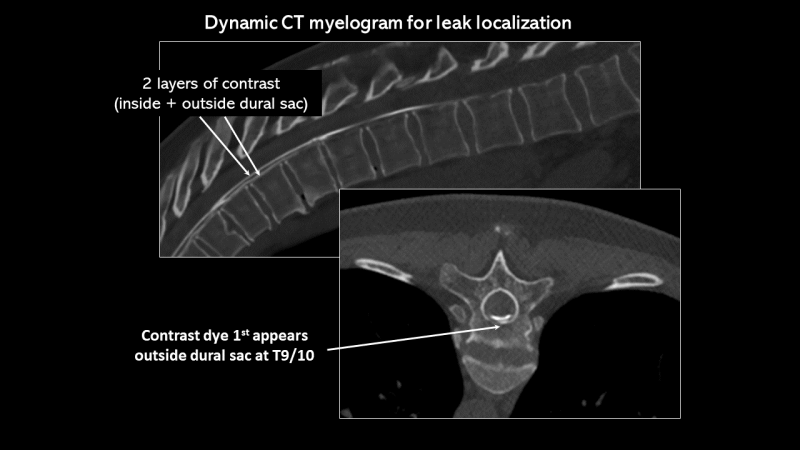Katie’s spontaneous spinal CSF leak seemed to heal on its own, but several years later, a minor car accident resulted in a relapse. She needed surgery to get her life back.
There was nothing that precipitated Katie’s headache. No accident, no warning. It just came over her one day, rendering her so debilitated she had to hold on to walls in order to stay upright as she tried to walk. She saw her local doctor, who sent her to the hospital, where she was diagnosed with a spontaneous spinal cerebrospinal fluid, or CSF, leak. She received two non-targeted epidural blood patches, neither of which provided long-lasting relief, and was told by the neurologist that there wasn’t any more treatment to be done, other than taking steroids and letting time do the work of healing. She did find herself improving, and aside from periodic spells of fatigue, she gradually began to feel as though she were entirely back to normal. With her headaches gone, she went back to living her normal, active life, assuming this strange incident was over, never to return.
Then one day, nine years later, as she sat in the back of a parked car, a car hit her from behind. The pressure she felt in the back of her head and neck in the aftermath of the accident prompted her to see a chiropractor, but after being treated for months without any improvement, she went to her doctor and had an MRI done of her head and neck. Based on the MRI findings, the doctor diagnosed her with intracranial hypotension due to a spinal cerebrospinal fluid leak—just like she’d had nine years ago. Katie went to see a neurosurgeon about it, expecting him to suggest blood patches and steroids like she’d had the last time. But instead, the doctor asked her if she had headaches that were positional—whether they improved when she laid down and worsened when she stood up. She said no, she didn’t really have terrible headaches, just this awful pressure that made her head feel like a completely full water balloon. He told her this meant she did not have a spinal CSF leak. Confused, Katie sought another opinion from a different doctor who told her she did, in fact, have a spinal CSF leak—but since she’d gotten better more or less on her own nine years earlier, that would probably happen again, and he recommended no further intervention. But Katie was not getting better. Her head pressure was unrelenting, she had additional symptoms including visual changes, hearing changes, dizziness, memory disturbance, word-finding difficulties and handwriting changes. Her quality of life was severely diminished. Finally, she saw a team of doctors with experience in treating spinal CSF leaks, who agreed that the diagnosis of spontaneous spinal CSF leak was indeed correct, even though her head pain was not positional. The testing they did revealed a leak in her upper back due to a bone spur on her spine, in front of her spinal cord.
Katie had a series of targeted blood patches aimed at that area. However, just like the non-targeted patches she’d had those years before, the patches failed to provide relief. The next step was surgery. Like her earlier doctors, however, the surgeon seemed reluctant. Wasn’t she managing okay? Wasn’t there a chance this could just resolve on its own? But Katie insisted: the way she was living now wasn’t living. And she wanted to live. She wanted her life back. After the surgery was over, the surgeon told Katie’s family that he didn’t know how she’d been able to function all this time and that she’d had a large leak with an old bone spur that never would have healed on its own. Once Katie learned about this, she felt validated: she had struggled so much to get to the point of having surgery, and it was a relief to know that it had, indeed, been the right call.
A year after surgery, Katie is feeling great. No head presure, no fatiguing “spells,” all symptoms of her spinal CSF leak gone. She feels proud that she didn’t give up during the long fight to have her symptoms taken seriously, grateful for the doctors who finally listened to her, and thankful for her family, who supported her throughout the ordeal. Most of all, she wants people suffering from spinal CSF leak to know that there is hope. “It’s difficult to advocate for yourself when you’re sick,” she says, “but there truly is hope for getting better.”
Some of Katie’s medical imaging findings are shown below:




Our team at Spinal CSF Leak Foundation wishes to extend our appreciation of all those physicians working so hard to help patients, as well as those who assisted with this feature story.

